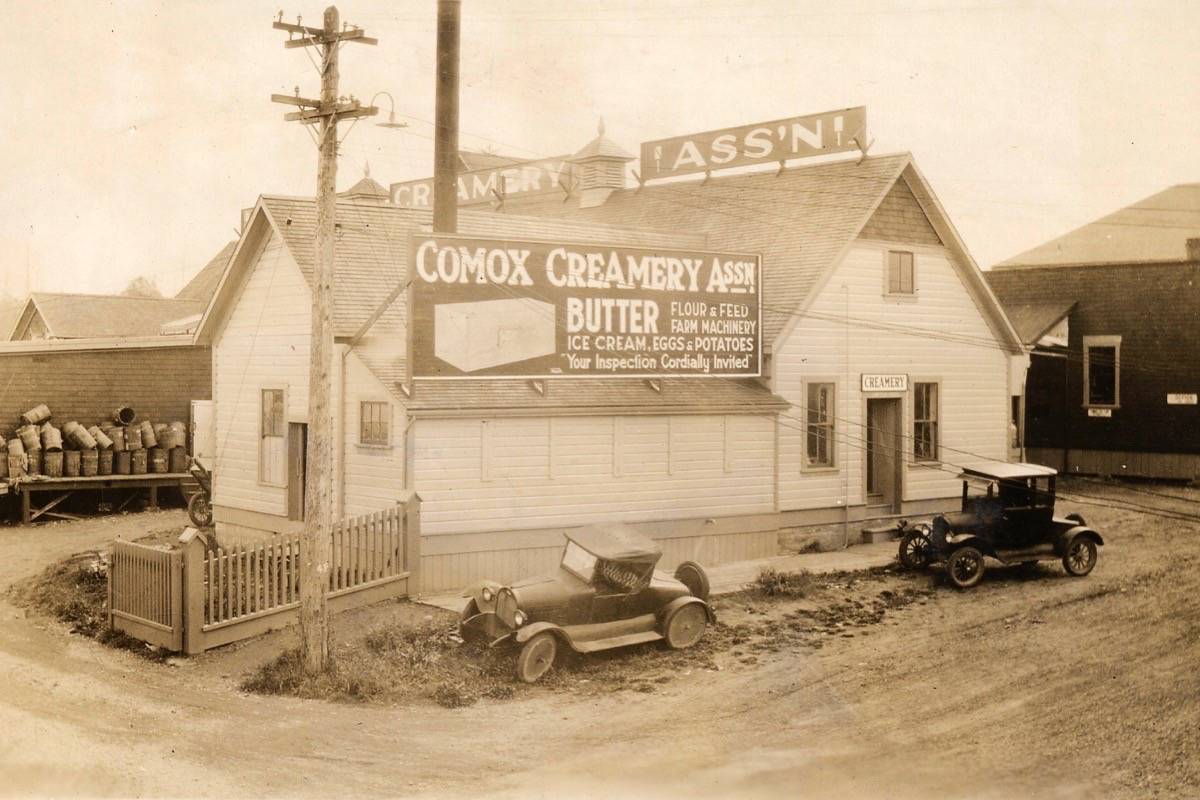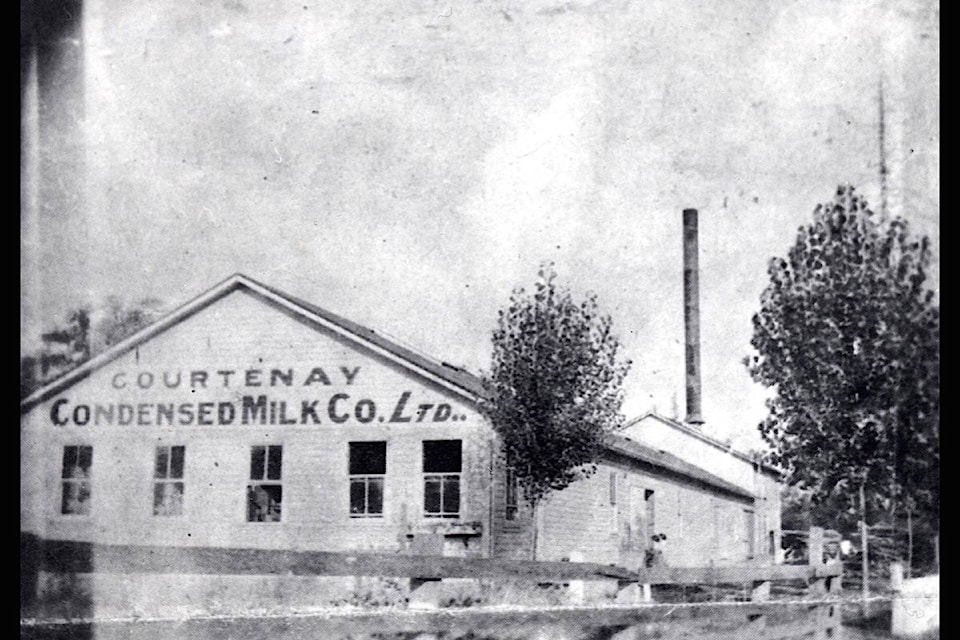The impending closure of Saputo’s dairy plant in Courtenay will mark the end of 118 years of processing dairy products from local farmers.
According to Edwin Grieve, the origins of the Comox Co-operative Creamery — located on Sixth Street in the vicinity of the library — date back to a meeting on March 12, 1901.
“Each farmer’s donation of $100 or $200 would enable the building of a facility, and the purchase of equipment to allow the Valley’s rich Jersey milk to be churned into butter to supply the growing market on the Island and Lower Mainland,” said Grieve, the regional district’s Area C director who grew up in the Comox Valley.
Unlike today, he said the creamery sold farm supplies, hardware, eggs and vegetables. In 1922, it began producing canned jams and jellies from Comox Valley fruit.
“It was estimated that between 70 and 80 per cent of every Comox Creamery sales dollar stayed in the Comox Valley,” Grieve said.
The first president of the co-op was William Grieve — Edwin is not sure of the relation. The board of directors included names such as McPhee, Beckensell, Parkin, Ball, Carter and Williams.
In 1914, the Courtenay Condensed Milk factory opened next to the Puntledge River on Anderton Avenue — hence the Condensory Bridge, Grieve notes. It operated until the early-1920s.
While the creamery made butter from the cream-rich milk of the Jersey cow, he said the Condensory spurred the introduction of the new, higher-producing Holstein cattle.
“The brand of Buttercup condensed milk was the Comox Valley’s own.”
Eventually, the Pacific Milk Company bought the local brand, and the Comox Creamery was purchased by the Fraser Valley Milk Producers Association Dairyland brand, which became Saputo.
These days, Grieve said more than 90 per cent of food consumed on Vancouver Island arrives by truck or ferry.
“If we have gone global over 100 years for our food supply, we should be able to bring it back to local over the next 100,” Area A director Daniel Arbour said.
While predicting the future can be risky, Arbour thinks a few trends could help bring back local food. Firstly, food prices and transportation costs could continue to rise as emerging economies mature and fossil fuel costs increase.
“Over time this should help demand for local foods as being price-competitive,” Arbour said.
He also thinks food security policies will continue to grow, mirroring trends in Europe where agriculture is heavily subsidized and protected.
“I can foresee these policies taking root in North America, in time.”
Furthermore, he notes the Comox Valley has some of the best growing conditions in Canada, yet agricultural land is under-utilized.
“We need to prepare to increase production, and in the short-term support existing farmers so that our local food culture can continue to re-root and grow,” Arbour said.

